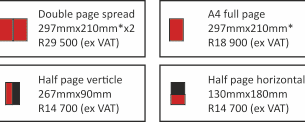As the name suggests, an Energy Performance Certificate (EPC) is a measure of the energy efficiency performance of a building. And while it is still too early to judge its impact (deadline for certification is December this year), it has massive potential to act as impetus to reduce carbon emissions in the country.
To determine the EPC rating of a building, an EPC inspection body will include all sources of energy used in the building. This includes energy generated by a solar PV installation. What this means in practice is that even though a solar installation improves the scope 1 and 2 carbon emissions attributable to a building, it will not have any effect on the EPC rating.
Consider two identical buildings, both consuming 1 000 000 kWh per year. If a 100% off-grid power solution is installed on one building, but its energy consumption remains the same, the building’s efficiency has not improved. Therefore, the EPC rating of the building will remain the same whether it has the off-grid solution or not.
If the other building installs energy efficiency measures such as LED lighting with efficient HVAC controls that reduces its annual energy consumption to 800 000kWh (a 20% reduction in energy consumption), that building’s EPC rating will improve. As such, it will have a better rating than the off-grid building that still consumes 1 000 000 kWh per year
Fuelling change
Fuel used by a building’s generators is another matter to consider as using diesel fuel adversely affects the energy performance of a building.
The SANS 1544:2014 standard requires the inclusion of the energy value in kWh of any liquid fuel used during the year of assessment to determine the net energy consumption of a building. With most buildings in the country relying on diesel fuel-powered backup generators to address the ongoing scourge of load shedding or other interruptions in grid-supplied electricity (cable faults, cable thefts, and so on), diesel fuel is often a significant energy source.
The conversion of diesel fuel to electrical energy is not very efficient with the typical generator providing an efficiency of approximately 30%. This means that for every kWh of electricity produced, approximately 3.3 kWh of diesel fuel is used by the generator.
Consider a building that, under normal circumstances, uses 1 000 000 kWh per year (without any back-up power). If this building must rely on generator back-up for 10% of its energy needs (100 000 kWh of electricity), it will consume 333 333 kWh worth of diesel fuel. In terms of an EPC, this means that the building’s energy consumption of 900 000 kWh (grid electricity) is added to 333 333 kWh of liquid fuel (diesel) for a total of 1 233 333 kWh – this is a massive increase over the base case of 1 000 000 kWh.
Remember, the building still uses the same amount of electrical energy (the 1 000 000 kWh), but the total energy consumption increased because of the 30% generator efficiency. Therefore, the use of energy from a diesel generator results in an energy footprint larger than that from using grid electrical energy and this will negatively impact on its EPC rating.
Gaining a good EPC rating requires building owners to rethink how they approach energy usage in a modern world. With so many influencing factors playing a role in the certification process, it is best to partner with a trusted EPC inspection body like RMS Sustainability Services to help guide the steps necessary to take.

By Frikkie Malan, head of sustainability at Remote Metering Solutions.



